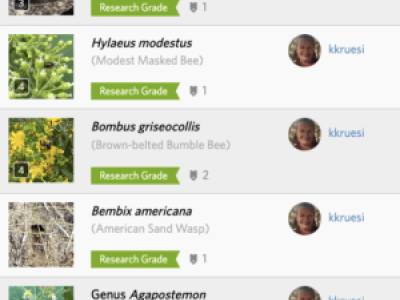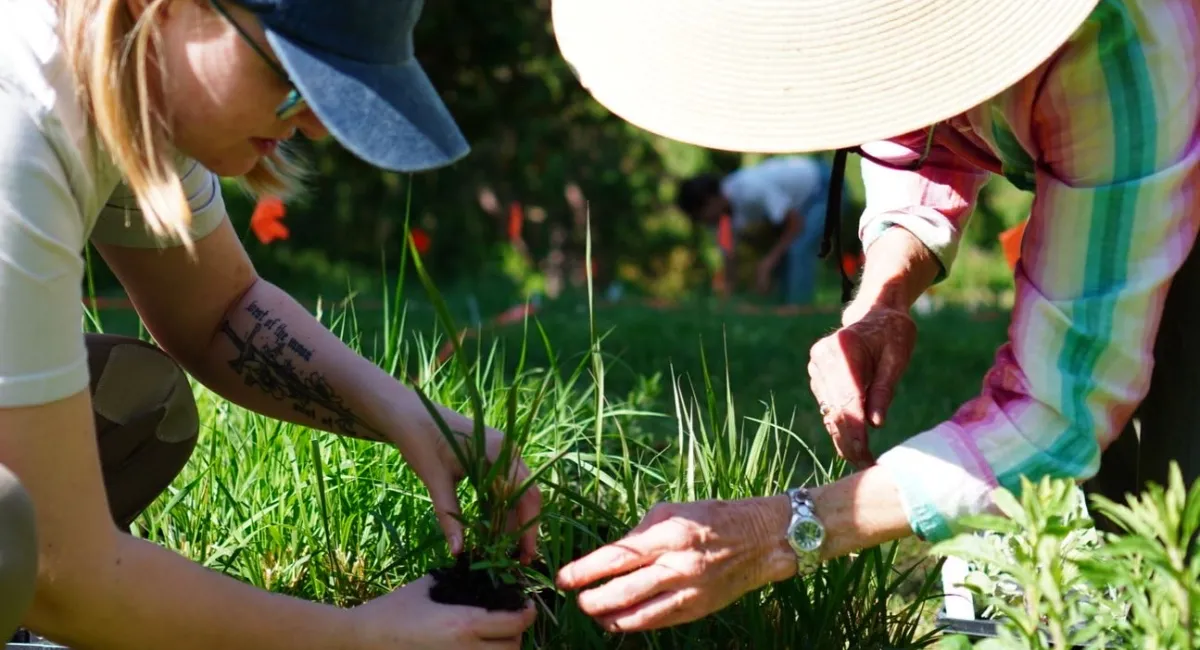Native plants attract diverse insect visitors: native bees, flower flies, beetles, solitary wasps, butterflies, caterpillars and more. Not all will be prominently feeding from flowers. Many are inconspicuous, either camouflaged or leaving behind evidence such as cut leaves or minute droppings. The presence of insects is an indication of a healthy natural community. It is rewarding to identify these beneficial guests!

We recommend setting up an iNaturalist account to not only help ID what you’ve found but to contribute to community science, e.g. Vermont Center for Ecostudies’ Vermont Atlas of Life . Community scientists contribute over 95% of Vermont’s biodiversity records and Vermonters contribute more field observations per capita than any other state!
iNaturalist offers a great guide for getting started on the app or scroll down on this site for some how-to videos. Here are a few additional tips based on our experience:
Getting the right photo to use on iNaturalist takes patience. Move slowly and maintain sharp focus. Select the shot that shows key features, crop it and post to your iNaturalist account. The app's algorithms will suggest some IDs.
Review the suggestions and select the best match. Note whether the suggested insect is active at the time of year the photo was taken. For example, if your photo was taken in May and the insect is only active in August, it’s not a match! Likewise, if the species has not been seen in this part of the country, it’s likely not a match either.
Experts will confirm or suggest another ID. Once two agree on the species ID, it is designated Research Grade. Scientists have also created “Projects” to join. For example, users can help track which plant species are favored by leaf cutter bees!
We’ve learned a lot by observing, photographing and uploading our photos, and scientists are grateful for the observation data. You may observe a bee, beetle or moth rare to science!

